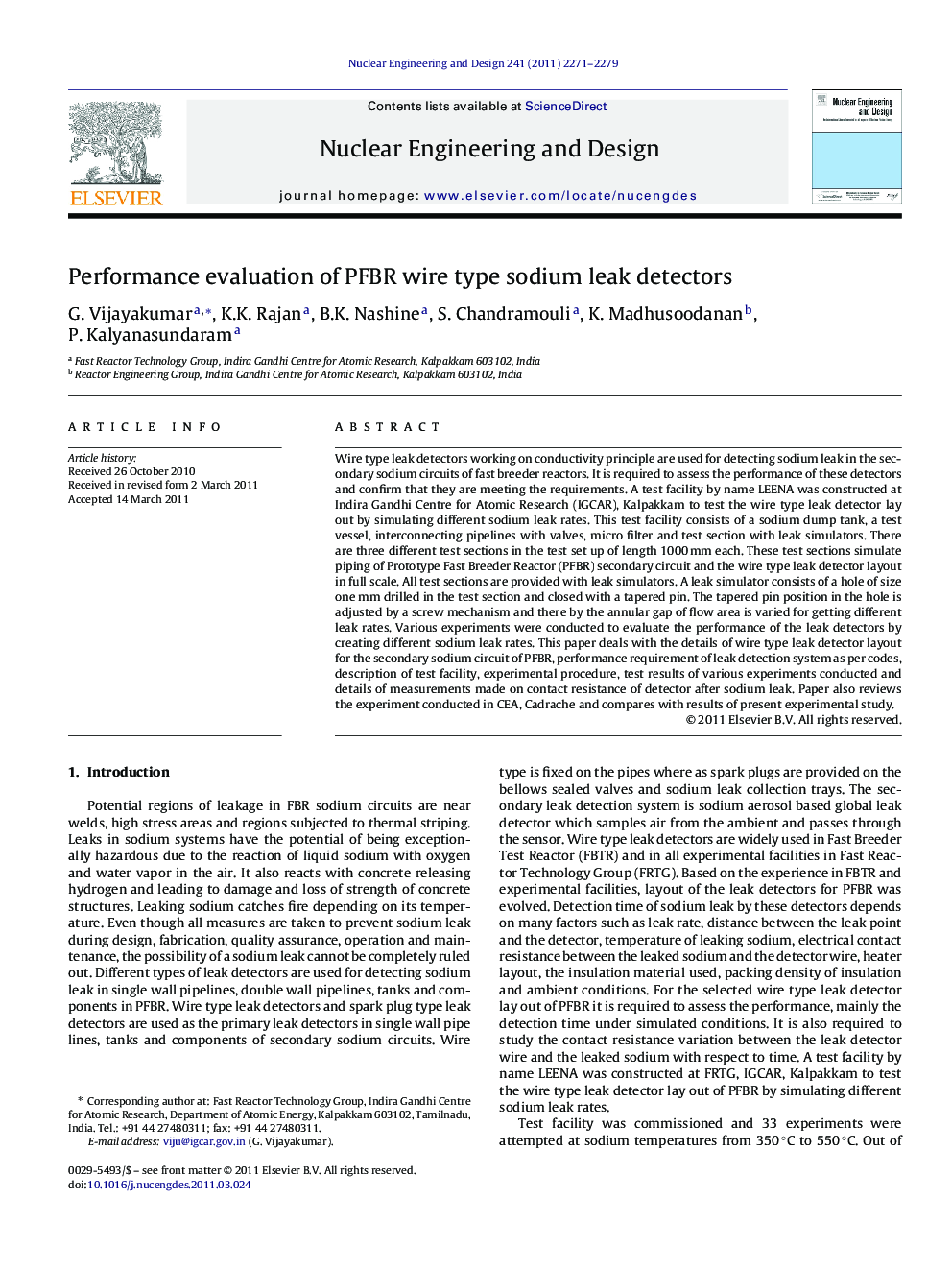| Article ID | Journal | Published Year | Pages | File Type |
|---|---|---|---|---|
| 298120 | Nuclear Engineering and Design | 2011 | 9 Pages |
Wire type leak detectors working on conductivity principle are used for detecting sodium leak in the secondary sodium circuits of fast breeder reactors. It is required to assess the performance of these detectors and confirm that they are meeting the requirements. A test facility by name LEENA was constructed at Indira Gandhi Centre for Atomic Research (IGCAR), Kalpakkam to test the wire type leak detector lay out by simulating different sodium leak rates. This test facility consists of a sodium dump tank, a test vessel, interconnecting pipelines with valves, micro filter and test section with leak simulators. There are three different test sections in the test set up of length 1000 mm each. These test sections simulate piping of Prototype Fast Breeder Reactor (PFBR) secondary circuit and the wire type leak detector layout in full scale. All test sections are provided with leak simulators. A leak simulator consists of a hole of size one mm drilled in the test section and closed with a tapered pin. The tapered pin position in the hole is adjusted by a screw mechanism and there by the annular gap of flow area is varied for getting different leak rates. Various experiments were conducted to evaluate the performance of the leak detectors by creating different sodium leak rates. This paper deals with the details of wire type leak detector layout for the secondary sodium circuit of PFBR, performance requirement of leak detection system as per codes, description of test facility, experimental procedure, test results of various experiments conducted and details of measurements made on contact resistance of detector after sodium leak. Paper also reviews the experiment conducted in CEA, Cadrache and compares with results of present experimental study.
► Performance evaluation of wire type leak detectors was conducted in LEENA facility by creating sodium leaks. ► The lowest leak rate of 214 g/h was detected in 50 min and the highest detection time was 6 h for a leak rate of 222 g/h. ► Factors affecting the leak detection time are packing density of thermal insulation, layout of heater, temperature, etc. ► Relationship between leak rate and detection time was established and a leak rate of 100 g/h is likely to be detected in 11.1 h. ► Contact resistance of leaked sodium increased to 3.5 kilo ohms in 20 h.
